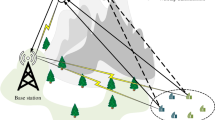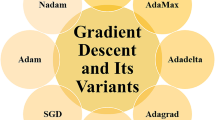Abstract
The current and next generations of cellular networks produce a massive amount of data. With this vast parameter increase, cellular communication networks have grown incredibly complicated. In addition, these cellular networks are unmanaged with conventional techniques, and a more advanced design and optimization methodology that depends on Machine Learning (ML) models is necessary. This work proposes a framework model for predicting downlink throughput (DL-Throughput) using ML models in fourth and fifth generations (4G/5G) cellular networks. The important parameters are selected from data measurements based on the correlation coefficient. The critical and effective parameters such as Reference Signal Received Power (RSRP), Signal to Interference and Noise Ratio(SINR), Received Signal Strength Indicator (RSSI), and Reference Signal Receive Quality (RSRQ) have been applied for the training model to predict the DL-Throughput in cellular networks. The prediction accuracy of the determination coefficient ranges between 89% and 96% from three different operators.






Similar content being viewed by others
Data availability
The data supporting the findings of this study are not currently available due to future work. We anticipate making the data openly accessible after finishing our works. In the meantime, for any inquiries regarding the data or requests for access, please contact corresponding author.
References
Eyceyurt E, Zec J (2020) Uplink throughput prediction in cellular mobile networks. Int J Electron Commun Eng 14(6):149–153
Shakir ZD, Zec J, Kostanic I, Al-Thaedan A, Salah MEM (2023) User equipment geolocation depended on long-term evolution signal-level measurements and timing advance. Int J Electr Comput Eng 13(2):1560
Kim Y, Kim Y, Oh J, Ji H, Yeo J, Choi S, Ryu H, Noh H, Kim T, Sun F et al (2019) New radio (nr) and its evolution toward 5G-advanced. IEEE Wirel Commun 26(3):2–7
Shakir Z, Al-Thaedan A, Alsabah R, Salah M, AlSabbagh A, Zec J (2023) Performance analysis for a suitable propagation model in outdoor with 2.5 GHz band. Bull Electr Eng Inform 12(3):1478–1485
Imoize AL, Orolu K, Atayero AA-A (2020) Analysis of key performance indicators of a 4G LTE network based on experimental data obtained from a densely populated smart city. Data Brief 29:105304
Rajarajeswarie B, Sandanalakshmi R (2022) Machine learning based hybrid precoder with user scheduling technique for maximizing sum rate in downlink MU-MIMO system. Int J Inf Technol 14(5):2399–405
Shakir Z, Mjhool AY, Al-Thaedan A, Al-Sabbagh A, Alsabah R (2023) Key performance indicators analysis for 4 G-LTE cellular networks based on real measurements. Int J Inf Technol 15(3):1347–55
Eyceyurt E, Egi Y, Zec J (2022) Machine-learning-based uplink throughput prediction from physical layer measurements. Electronics 11(8):1227
Elsherbiny H, Abbas HM, Abou-zeid H, Hassanein HS, Noureldin A (2020) 4G LTE network throughput modelling and prediction. In: GLOBECOM 2020-2020 IEEE Global Communications Conference, IEEE. pp 1–6
Abou-Zeid H, Hassanein HS, Valentin S (2014) Energy-efficient adaptive video transmission: exploiting rate predictions in wireless networks. IEEE Trans Veh Technol 63(5):2013–2026
AbdulRaheem M, Oladipo ID, Imoize AL, Awotunde JB, Lee C-C, Balogun GB, Adeoti JO (2023) Machine learning assisted snort and zeek in detecting DDoS attacks in software-defined networking. Int J Inf Technol. https://doi.org/10.1007/s41870-023-01469-3
Yue C, Jin R, Suh K, Qin Y, Wang B, Wei W (2017) Linkforecast: cellular link bandwidth prediction in LTE networks. IEEE Trans Mob Comput 17(7):1582–1594
Lee D, Lee D, Choi M, Lee J (2020) Prediction of network throughput using arima. In: 2020 International Conference on Artificial Intelligence in Information and Communication (ICAIIC), IEEE. pp 1–5
Wei B, Okano M, Kanai K, Kawakami W, Katto J (2018) Throughput prediction using recurrent neural network model. In: 2018 IEEE 7th Global Conference on Consumer Electronics (GCCE), IEEE. pp 107–108
Na H, Shin Y, Lee D, Lee J (2021) LSTM-based throughput prediction for LTE networks. ICT Express 19(2):247–52
Dong X, Fan W, Gu J (2015) Predicting LTE throughput using traffic time series. ZTE Commun 13(4):61–64
Mostafa A, Elattar MA, Ismail T (2022) Downlink throughput prediction in LTE cellular networks using time series forecasting. In: 2022 International Conference on Broadband Communications for Next Generation Networks and Multimedia Applications (CoBCom), IEEE. pp 1–4
Minovski D, Ogren N, Ahlund C, Mitra K (2021) Throughput prediction using machine learning in LTE and 5G networks. IEEE Trans Mob Comput 22(1):1825–1840
Shakir Z, Zec J, Kostanic I (2020) LTE geolocation based on measurement reports and timing advance. In: Advances in information and communication: proceedings of the 2019 Future of Information and Communication Conference (FICC), Vol. 2. Springer. pp 1165–1175
Shakir Z, Zec J, Kostanic I (2018) Measurement-based geolocation in lte cellular networks. In: 2018 IEEE 8th Annual Computing and Communication Workshop and Conference (CCWC), IEEE. pp 852–856
Al-Thaedan A, Shakir Z, Mjhool AY, Alsabah R, Al-Sabbagh A, Salah M, Zec J (2023) Downlink throughput prediction using machine learning models on 4G-LTE networks. Int J Inf Technol 15(6):2987–93
Shakir Z, Al-Thaedan A, Alsabah R, Al-Sabbagh A, Salah MEM, Zec J (2022) Performance evaluation for RF propagation models based on data measurement for LTE networks. Int J Inf Technol 14(5):2423–2428
Author information
Authors and Affiliations
Corresponding author
Ethics declarations
Conflict of interest
The authors declare no conflict of interest.
Rights and permissions
Springer Nature or its licensor (e.g. a society or other partner) holds exclusive rights to this article under a publishing agreement with the author(s) or other rightsholder(s); author self-archiving of the accepted manuscript version of this article is solely governed by the terms of such publishing agreement and applicable law.
About this article
Cite this article
Al-Thaedan, A., Shakir, Z., Mjhool, A.Y. et al. A machine learning framework for predicting downlink throughput in 4G-LTE/5G cellular networks. Int. j. inf. tecnol. 16, 651–657 (2024). https://doi.org/10.1007/s41870-023-01678-w
Received:
Accepted:
Published:
Issue Date:
DOI: https://doi.org/10.1007/s41870-023-01678-w




